Digital Poster
Clinical Focus Meeting: Novel Contrast Agents
ISMRM & ISMRT Annual Meeting & Exhibition • 10-15 May 2025 • Honolulu, Hawai'i

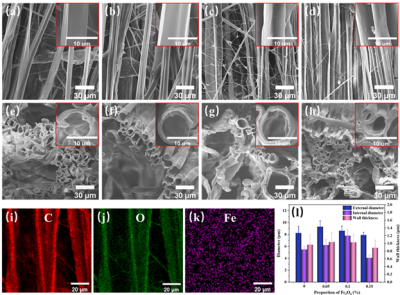 |
Computer Number: 49
4019. Co-electrospun
Axon-Mimicking Phantoms with Iron Oxide for Multimodal MRI
F. Zhou, Q. Li, L. Xu, F. Gao
MicroPhantoms Ltd, Cambridge, United Kingdom
Impact: This phantom offers a robust platform for
validating DTI and T2/T2* MRI in iron-related neurological
disorders. It enables realistic assessment of MRI methods,
their sensitivity to pathological changes, and potential for
improving disease diagnosis and monitoring.
|
|
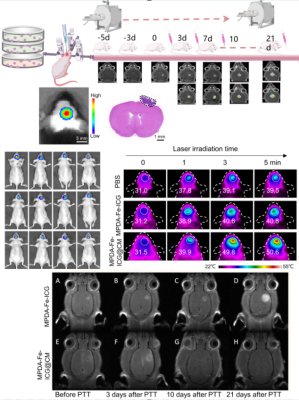 |
Computer Number: 50
4020. Tumor
membrane-camouflaged mesoporous polydopamine nanoparticles
loaded with Fe(Ⅲ) and ICG for MRI-guided photothermal treatment
of glioma
P. Liu, Q. Ouyang, G. Jiang
The Affiliated Guangdong Second Provincial General Hospital of Jinan University, Guangzhou, China
Impact: This study illustrates that the highly
integrated and biocompatible MPDA-based NPs can serve as a
versatile nanoplatform by loading different imaging
molecules and drugs for multi-modal imaging and cancer
combination therapy.
|
|
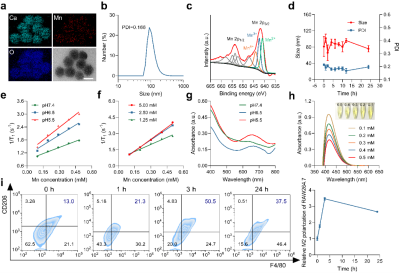 |
Computer Number: 51
4021. Nanoparticles
capable of navigating macrophages to tumors for magnetic
resonance imaging and treatment of ultra small pulmonary
metastasis

M. Sui, Y. Luo, S. Li, S. Yue, D. Chen, S. Chen, X. Zhou
State Key Laboratory of Magnetic Resonance and Atomic and Molecular Physics, Innovation Academy for Precision Measurement Science and Technology, Chinese Academy of Sciences, Wuhan, China
Impact: CQM NPs serve as a promising MRI contrast agent
for early detection and as a potential therapeutic option
for pulmonary metastasis, offering hope for reducing the
high mortality associated with this challenging disease.
|
|
 |
Computer Number: 52
4022. Evaluation
of hypoxia targeting MRI contrast agent FOBNI in brain tumor
models at 3T
M. Duraiyarasu, L. Damodaran, S. Mantri, C. C. Quarles, V.
Kodibagkar
Arizona State University, Tempe, United States
Impact: The contrast agent FOBNI showed good
hypoxia-targeting ability in rat tumors. This will open a
new path to developing iron-based hypoxia-targeting agents
as an alternative to traditional gadolinium-based contrast
agents.
|
|
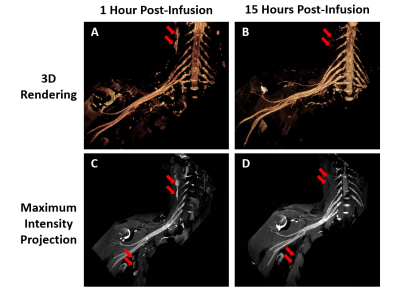 |
Computer Number: 53
4023. Lymph
Node Suppression with Simultaneous Vascular Suppression on
Ferumoxytol-Enhanced Magnetic Resonance Neurography
S. Turbin, D. Sneag, A. Lowe, M. Duong, E. T. Tan
Hospital for Special Surgery, New York, United States
Impact: Low-dose Ferumoxytol provides significant lymph
node suppression and simultaneous vascular suppression in
brachial plexus magnetic resonance neurography (MRN) 15
hours post-infusion. Lymph suppression may enable 3D
rendering to improve nerve visualization in diagnostic and
surgical planning applications.
|
|
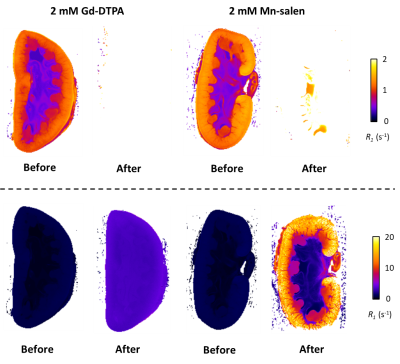 |
Computer Number: 54
4024. Novel
MRI contrast agents and image analysis for studying kidney
pathophysiology
G. Aspinall, C. Gidman, A. Daniel, S. Francis, D. Irvine, G.
Rivers, P. Harvey
The University of Nottingham, Nottingham, United Kingdom
Impact: Imaging phantoms that accurately represent the
tissue they are simulating enhances imaging accuracy, aids
in machine calibration, supports research and development,
improves training for radiologists/technologists, and
ensures consistent data in clinical trials, ultimately
leading to better diagnostics and patient care.
|
|
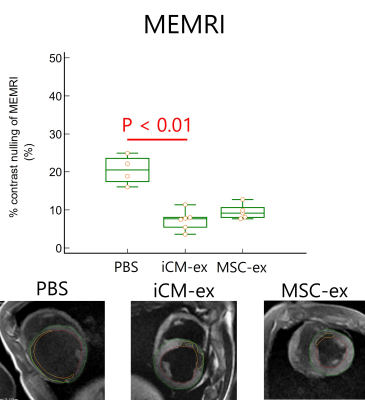 |
Computer Number: 55
4025. Assessing
Exosome Therapy Efficacy in Myocardial Infarction with
Manganese-Enhanced MRI in a Porcine Model
H. Takashima, E. Tzng, G. Ikeda, N. Bayardo, C. O’Brien, Y.
Matsuura, P. Yang
Stanford University, Palo Alto, United States
Impact: This study demonstrates MEMRI’s potential as a
superior imaging modality for assessing exosome therapy
efficacy in myocardial infarction, providing insights into
regenerative mechanisms and highlighting the therapeutic
promise of iCM- and MSC-derived exosomes in cardiac
therapeutics.
|
|
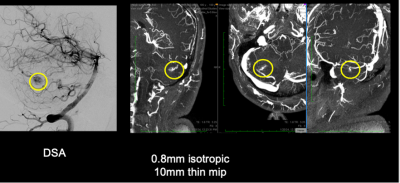 |
Computer Number: 56
4026. Ferumoxytol
MRI for the Detection of Brain Arteriovenous Malformations
Lesions in Patients with Hereditary Hemorrhagic Telangiectasia
A. Gill, E. Benech, Y. J. Lee, M. Ohliger, J. Liu, M.
Conrad, D. Langston, L. Park, T. Lomax Truong, J. Lupo, D.
Saloner, S. Hetts
UCSF, San Francisco, United States
Impact: The AVIATOR study will enable efficient
screening and high-resolution non-invasive follow-up of HHT
patients. Quantitative MR techniques may be less subject to
inter-operator-dependency, thus providing more objective
means for developing a global HHT disease burden score.
|
|
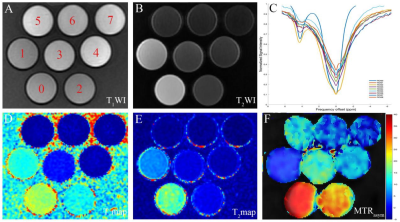 |
Computer Number: 57
4027. Preparation
of Fe-Mn Co-doped 2D MXene Nanoprobes and Feasibility Study of
Combining with CEST for Multimodal Imaging
F-X Hu, D. Wang, H. Zhang, X-W Ma, M-L Li, P-Y Wu, R. Shen,
W-J Peng, T. Tong
Department of Radiology, Fudan University Shanghai Cancer Center, Department of Oncology, Shanghai Medical College, Fudan University, Shanghai, China
Impact: This approach enables simultaneous imaging of
dual contrast agents with distinct concentration ranges,
with CEST signal variations reflecting probe concentration.
The molecular probes also show potential for effective
photothermal therapy, advancing multi-functional cancer
diagnostic and treatment options.
|
|
 |
Computer Number: 58
4028. Relationship
Between Fractional Myocardial Blood Volume and T1 Reactivity
using Ferumoxytol-Enhanced Cardiovascular Magnetic Resonance
A. Pogosyan, M. Mahmoudi, X. Dong, Z. Ming, Y. Li, J. P.
Finn, K-L Nguyen
David Geffen School of Medicine at UCLA, Los Angeles, United States
Impact: Our findings demonstrate the distribution of
ferumoxytol-enhanced fractional myocardial blood volume and
its relationship with T1 reactivity. If validated, these
biomarkers could offer valuable insights into local tissue
perfusion without requiring invasive procedures or
gadolinium-based contrast agents.
|
|
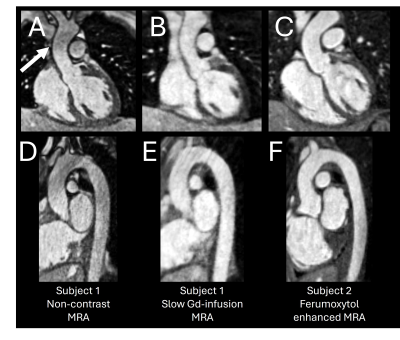 |
Computer Number: 59
4029. Initial
Experience with Non-contrast, Gadolinium, and
Ferumoxytol-enhanced Image-based Navigator 3D MRA of the
Thoracic Aorta at 0.55T
J. Varghese, K. Binzel, S. M. Arshad, N. Jin, K. Kunze, R.
Botnar, C. Prieto, R. Ahmad, Y. Han, M. Tong, O. Simonetti
The Ohio State University, Columbus, United States
Impact: The availability of a fixed acquisition time,
non-contrast enhanced and contrast-enhanced image-based
navigator (iNAV) 3D MRA applications on a commercial 0.55T
system can meet patient-specific needs for thoracic aortic
angiogram evaluation.
|
|
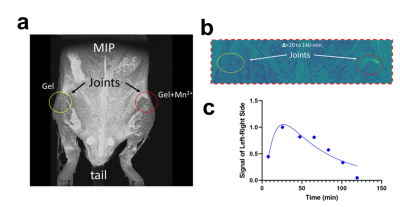 |
Computer Number: 60
4030. Manganese-bound
Protein-based Hydrogel as a T1-brightening Theranostic Agent
H-W Shih, D. Britton, O. Aristizabal, N. Pandya, J. Kim
Montclare, Y. Wadghiri
New York University, Brooklyn, United States
Impact: The Mn-bound protein-hydrogel, Q5•Mn, provides a
safer, tunable MRI contrast agent with prolonged
T1-brightening stability, offering a viable alternative to
gadolinium. This innovation supports safer, targeted imaging
in clinical settings and opens new possibilities for
protein-based theranostic agents in MRI.
|
|
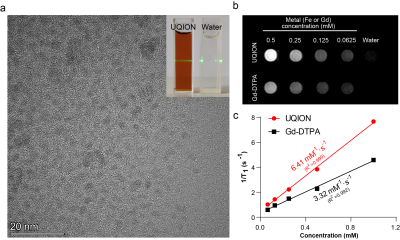 |
Computer Number: 61
4031. Ultra-small
iron oxide nanoparticles for diagnosing deep vein thrombosis in
T1-weighted magnetic resonance imaging
T. Cui, Y. Xu, Y. Zhang, P. Wang, W. Yang, B. Zhang
Tongji University, Shanghai, China
Impact: Ultra-small iron oxide improves clinical deep
vein thrombosis detection, addressing venous contrast agent
deficiencies and advancing MRI use in clinical settings.
|
The International Society for Magnetic Resonance in Medicine is accredited by the Accreditation Council for Continuing Medical Education to provide continuing medical education for physicians.